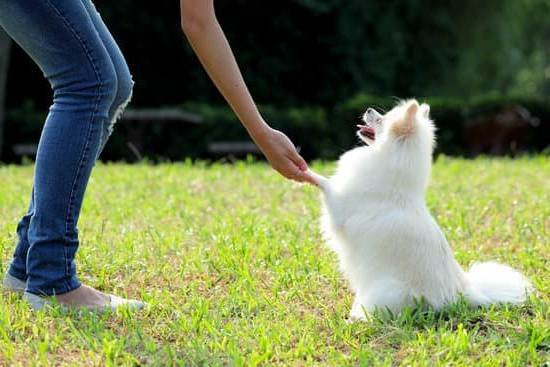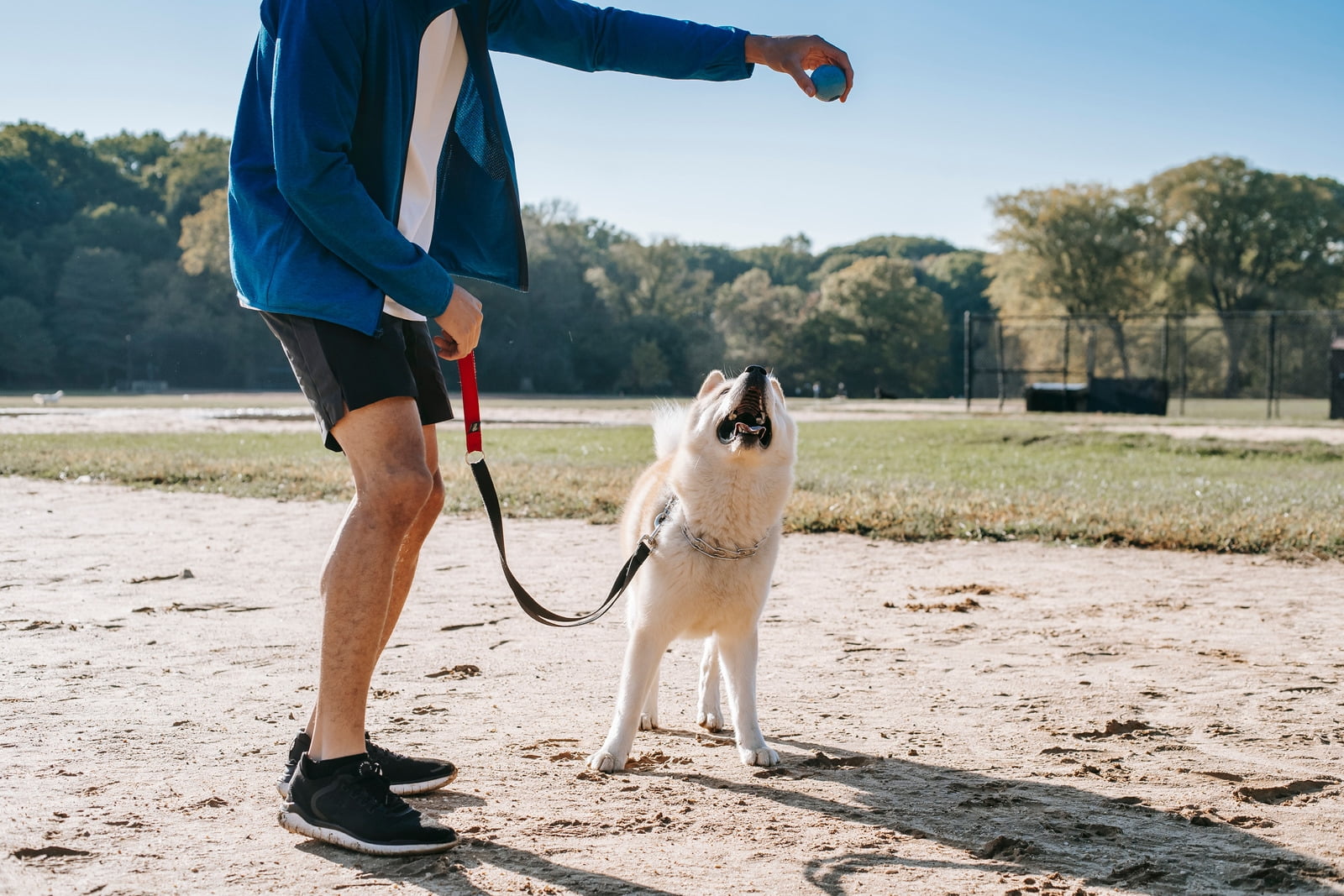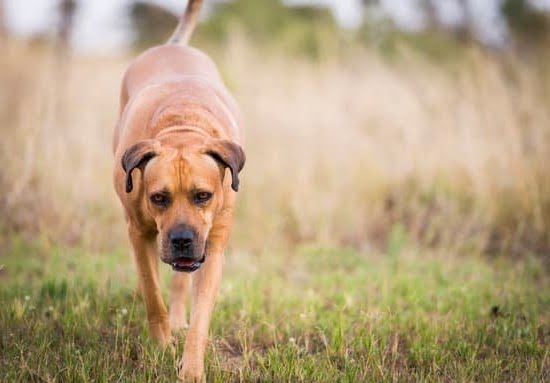Training a 14-year-old dog can present unique challenges that are different from training a young or middle-aged dog. As dogs age, they may experience physical and cognitive changes that can impact their ability to learn and retain new commands. However, with patience, consistency, and understanding, it is still possible to teach an older dog new tricks and reinforce good behavior.
The first step in training a senior dog is assessing their physical and mental health. It’s important to ensure that your furry friend is in good overall health before embarking on any training regimen. This involves carefully observing their movements, appetite, energy levels, and any signs of discomfort or pain. Consulting with a veterinarian can provide valuable insights into any health issues that may affect the training process.
When setting goals for training an older dog, it’s crucial to be realistic based on their age and capabilities. While younger dogs may excel at learning complex tricks or commands quickly, older dogs may have limitations due to factors such as reduced hearing or vision or mobility challenges like arthritis. Focusing on simple commands and manners can be more attainable for them and still contribute to their overall well-being.
Creating a positive training environment is key when working with an older dog. Unlike younger dogs who may have endless reserves of energy, senior dogs benefit from calm and quiet spaces that minimize distractions. Removing any potential disturbances during training sessions allows them to focus better. Additionally, non-slip surfaces can prevent accidents while providing stability during exercises.
Positive reinforcement techniques are highly effective when training older dogs as they respond well to rewards and praises. Using treats, praise, and affection helps motivate them to exhibit desired behaviors consistently. By acknowledging their efforts with positivity rather than punishment for mistakes or setbacks, you build trust and strengthen the bond between you and your canine companion.
In the following sections of this article, we will delve deeper into various aspects of training older dogs, including addressing age-related challenges, navigating setbacks with patience and persistence, and considering their health and safety during training. Throughout the journey, remember to cherish each moment spent with your beloved senior dog as you work together towards a stronger bond and celebrate their progress.
Assessing Your Dog’s Physical and Mental Health
Before embarking on a training regimen for your 14-year-old dog, it is important to assess their physical and mental health. Just like humans, older dogs may experience age-related health issues that can impact their ability to learn and participate in training sessions. By evaluating your dog’s overall well-being, you can ensure they are in the best condition to engage in training activities and tailor the training program to meet their specific needs.
To begin, pay attention to any signs of pain or discomfort that your dog may be exhibiting. Arthritis is a common ailment among senior dogs, and it can make movement challenging and painful for them. Look out for limping, difficulty climbing stairs or jumping onto furniture, and stiffness after periods of rest. These signs may indicate that your dog is experiencing joint pain and would benefit from modifications during training sessions to minimize stress on their joints.
Additionally, keep an eye out for changes in your dog’s behavior or cognitive abilities. Senior dogs may suffer from cognitive decline, which can affect their memory, learning capacity, and overall understanding of commands. If you notice increased confusion or forgetfulness in your dog, it is essential to adjust your training expectations accordingly. Focus on reinforcing behaviors they already know rather than introducing new commands.
Before initiating any training activities with your older dog, it is crucial to consult with a veterinarian. They can provide a comprehensive assessment of your pet’s health status and identify any underlying medical conditions or limitations that need to be taken into account during the training process. Your veterinarian will also advise you on appropriate exercises and activities given your dog’s age and overall health.
Taking the time to evaluate and address your 14-year-old dog’s physical and mental health not only sets them up for success in training but also ensures their comfort and well-being throughout the process. By partnering with your veterinarian and making adjustments based on their recommendations, you can create a training program that suits your dog’s unique needs and abilities.
Setting Realistic Training Goals
When it comes to training a 14-year-old dog, it is crucial to establish realistic goals that take into account their age and capabilities. While older dogs can still learn new behaviors and commands, it is important to understand that they may not have the same energy or physical abilities as when they were younger. By setting achievable goals, you can ensure a positive training experience for both you and your senior canine companion.
One key aspect of setting realistic training goals is focusing on simple commands and manners rather than complex tricks. While it can be tempting to teach your older dog impressive tricks like rolling over or jumping through hoops, these activities may be physically demanding for them. Instead, prioritize commands such as sit, stay, come, and walking on a leash without pulling. These basic commands are essential for maintaining their safety and allowing them to live comfortably in their later years.
Another aspect to consider when setting training goals for your senior dog is their age-related limitations. It is important to understand that elderly dogs may have decreased hearing or vision impairments. This means that you may need to modify your training techniques accordingly.
For example, using hand signals in addition to verbal cues can help dogs with hearing loss understand what you want them to do. Similarly, providing clear visual cues can greatly assist dogs with vision impairments in comprehending your instructions.
Overall, setting realistic training goals is essential when working with a 14-year-old dog. By focusing on simple commands and adapting training methods to address age-related challenges, you can create an environment that promotes successful learning and bonding with your beloved aging pet.
Establishing a Positive Training Environment
Creating a Calm and Quiet Space for Training Sessions
Establishing a positive training environment is crucial when it comes to training a 14-year-old dog. Older dogs may be more easily distracted or overwhelmed, so creating a calm and quiet space can help them focus and be more receptive to learning. Find a quiet area in your home where you can conduct training sessions without disturbances from other pets, loud noises, or people coming in and out.
Removing Distractions
To effectively train your older dog, it’s important to minimize distractions during training sessions. Remove any items that may divert their attention away from the task at hand, such as toys, food bowls, or other animals. Close doors or use baby gates if needed to create a designated space where your dog can concentrate solely on the training exercises.
Utilizing Comfortable Non-Slip Surfaces
Older dogs may have mobility issues or be more prone to slipping on certain surfaces. When choosing a location for your training sessions, opt for areas with non-slip surfaces such as carpeting or rubber mats. This will provide stability and prevent unnecessary strain on their joints.
Creating a positive training environment sets the stage for successful training sessions with your 14-year-old dog. By ensuring that the space is calm, distraction-free, and comfortable, you are setting your dog up for success when it comes to learning new commands and behaviors.
Remember to always approach training with patience and understanding towards your older furry friend. Keep sessions short and enjoyable while maintaining consistency in your approach. With time and effort, you will establish a positive bond with your senior dog through effective training techniques.
Utilizing Positive Reinforcement Techniques
Training an older dog can be a fulfilling and rewarding experience, especially when utilizing positive reinforcement techniques. Positive reinforcement is a training method that involves rewarding desired behaviors to encourage their repetition. This approach is particularly effective for older dogs as it focuses on motivation, encouragement, and building a strong bond between the owner and their faithful companion.
To begin utilizing positive reinforcement techniques, it is important to understand what motivates your 14-year-old dog. Every dog is unique, so it may take some trial and error to determine which rewards are most enticing to them. Treats are often a popular choice, but some older dogs may have dietary restrictions or preferences. In such cases, praise and affection can also serve as powerful rewards.
When using treats for training purposes, it is crucial to choose healthy options that align with your dog’s dietary needs. Small, soft treats are ideal for older dogs as they are easier for them to chew and digest. Additionally, using a variety of treats can help keep your dog engaged and motivated during training sessions.
In addition to treats, verbal praise and physical affection play a significant role in positive reinforcement training. Dogs thrive on the approval of their owners; therefore, using encouraging words in an upbeat tone and providing ample petting or belly rubs can reinforce desired behaviors effectively.
Remember that consistency is key when utilizing positive reinforcement techniques with an older dog. Be clear in your commands and expectations, ensuring everyone in the household uses the same cues consistently. By doing so, you will help eliminate confusion for your senior pup and establish a strong foundation for successful training.
Utilizing positive reinforcement techniques not only helps train your 14-year-old dog but also strengthens the bond between you both. Through patience, consistency, understanding, and motivation, you can navigate any challenges that arise while fostering a loving relationship with your loyal companion.
Tailoring Training Methods to Address Age-Related Challenges
Training Elderly Dogs with Decreased Hearing or Vision
One of the age-related challenges that may affect training sessions with a 14-year-old dog is decreased hearing or vision. As dogs age, their sensory abilities can decline, making it more difficult for them to perceive and respond to verbal cues or visual signals. However, there are strategies that can be implemented to accommodate these changes.
For dogs with decreased hearing, it is important to use hand signals or visual cues in addition to verbal commands. For example, you can pair a palm facing down as a signal for “sit” or a sweeping motion of your arm for “lie down.” By incorporating these visual cues, you can help your dog understand what you are asking of them even if they are unable to hear your voice clearly.
Similarly, for dogs with declining vision, focusing on hand signals becomes crucial. Ensure that your hand gestures are clear and recognizable. Use exaggerated movements and incorporate treats or rewards to reinforce the connection between the visual signal and the desired behavior.
Overcoming Mobility Limitations and Arthritis-Related Discomfort during Training
Another age-related challenge that may arise when training a 14-year-old dog is mobility limitations due to arthritis or other joint issues. It is essential to tailor your training methods to accommodate their comfort level and physical capabilities.
Consider using soft surfaces such as rubber mats or yoga mats during training sessions. These surfaces provide better traction and support for older dogs, reducing the risk of slips or falls. Additionally, create an environment where your dog does not have to navigate stairs or obstacles that might agitate their joints.
When teaching new commands or behaviors, break them down into smaller steps and reward your dog’s progress along the way. This prevents overexertion while providing mental stimulation and exercise tailored to your older dog’s needs. Remember to keep training sessions short but frequent, allowing enough time for rest and recovery.
Tailoring Training to Address Cognitive Functioning
Cognitive decline is another age-related challenge that may affect the training process with older dogs. Just as with humans, dogs may experience a decrease in memory, focus, and problem-solving abilities. However, there are techniques to adapt to these changes and make training sessions engaging and effective.
First, keep training sessions short and frequent to prevent mental fatigue. Older dogs have shorter attention spans, so breaking up the training into smaller sessions throughout the day can lead to better results. Additionally, use interactive toys or puzzle games as part of their training routine. These activities stimulate their cognitive function while reinforcing positive behaviors.
Lastly, be patient and provide ample time for your dog to respond to commands. Avoid rushing them or becoming frustrated if they take longer than before to learn new commands or tasks. Celebrate small victories along the way and focus on maintaining a positive and supportive environment during each training session.
By tailoring your training methods to address age-related challenges such as decreased hearing or vision, mobility limitations, and cognitive functioning decline, you can create a comfortable and effective learning experience for your 14-year-old dog.
Patience and Persistence
Training a 14-year-old dog can come with its own set of challenges and setbacks. It is important to approach these setbacks with the right mindset, patience, and persistence. Understanding that progress might be slower and setbacks might occur will help you navigate through this training journey.
One of the main challenges when training an older dog is that they may have developed certain habits or behaviors over time that can be difficult to change. These habits could include pulling on the leash, barking excessively, or even being resistant to commands. It is crucial to remember that these behaviors didn’t develop overnight and therefore cannot be unlearned quickly either. Consistency in training methods becomes imperative during this stage.
In order to overcome these setbacks, it is essential to remain patient and adjust your expectations accordingly. Recognize that your elderly dog might take longer to grasp the training concepts compared to a younger dog. Additionally, older dogs may also have physical limitations such as hearing loss or arthritis-related discomfort, which can further slow down the training process.
To navigate through training setbacks effectively, it is important to maintain consistency in your training routine. Stick to a regular schedule and reinforce positive behaviors consistently. Be sure to use positive reinforcement techniques such as treats, praise, and affection when your dog displays desired behaviors. Remember that older dogs thrive on love and attention, so providing them with a nurturing environment will greatly benefit their progress.
| Challenges | Tips for Overcoming Setbacks |
|---|---|
| Habits and behaviors developed over time | Consistency in training methods |
| Physical limitations like hearing loss or arthritis-related discomfort | Patience and adjustment of expectations |
| Slower progress compared to younger dogs | Maintaining consistency and reinforcing positive behaviors |
Special Considerations for Older Dogs
As your beloved dog reaches their senior years, it’s crucial to make adjustments to their training routine that take into account their changing physical and mental health needs. This section will highlight the special considerations for older dogs when it comes to health and safety during training sessions.
Warm-Up Exercises
Before engaging in any training activities, it is essential to warm up your older dog’s muscles and joints. Consider incorporating gentle warm-up exercises such as short walks or stretches to prepare their body for the training session. This will help reduce the risk of injury and improve their overall mobility during training.
Adequate Rest Intervals
Older dogs may require longer rest intervals between training exercises compared to younger dogs. Keep in mind that they may tire more easily, so be attentive to signs of fatigue or discomfort. If your senior dog appears tired or shows signs of stress, allow them ample time to rest before continuing with the session.
Adapting to Diminished Energy Levels
As dogs age, their energy levels naturally decline. Recognizing this change and adjusting your expectations during training is important. Shorter, more frequent sessions can help prevent your older dog from becoming overwhelmed or exhausted. Remember that quality over quantity is key – focus on engaging your dog mentally rather than pushing them physically.
Avoiding Overexertion
While it’s important to challenge your senior dog during training, it’s equally vital to avoid overexertion which could lead to injuries or exacerbate existing medical conditions. Be mindful of your dog’s comfort level and modify exercises as needed. For example, if your dog has arthritis or joint issues, opt for low-impact activities instead of demanding movements that could strain their bodies.
By considering these special considerations for older dogs during their training journey, you can ensure their health and safety while still achieving progress. Remember, the primary goal is to maintain a positive and enjoyable experience for your senior dog, fostering their mental stimulation and strengthening the bond between you both.
Seeking Professional Help
Training a 14-year-old dog can be a challenging task, especially if you are inexperienced or unfamiliar with training older dogs. In some cases, it may be beneficial to seek professional help from trainers or behaviorists who have expertise in working with senior dogs. These professionals can provide valuable guidance and support throughout the training process, helping you navigate any potential difficulties and ensuring the success of your training efforts.
One of the main benefits of working with a trainer or behaviorist is their knowledge and experience in understanding the unique needs and characteristics of older dogs. They can assess your dog’s health condition, evaluate their behavioral patterns, and devise a customized training plan that addresses their specific needs. Trainers and behaviorists also have techniques and methods specifically designed for senior dogs, which can enhance the effectiveness of your training sessions.
When choosing a trainer or behaviorist for your 14-year-old dog, it is crucial to find someone who specializes in working with older dogs. Look for professionals who have extensive experience in training senior canines and who use positive reinforcement methods. Positive reinforcement focuses on rewarding desired behaviors rather than punishing unwanted behaviors, creating a positive learning environment for your dog.
To find reputable trainers or behaviorists, you can ask for recommendations from your veterinarian or local pet communities. Additionally, online resources such as professional directories can help you locate experts in your area. When selecting a professional to work with, consider scheduling an initial consultation to discuss your goals and expectations to ensure they align with the trainer’s philosophy and approach.
Remember that seeking professional help does not mean you are incapable of training your 14-year-old dog; instead, it shows your commitment to providing them with the best possible care and ensuring their well-being during this stage of life. By working collaboratively with a trainer or behaviorist, you can gain valuable insights, acquire new skills, and strengthen the bond between you and your senior dog.
Together, you will be able to navigate the challenges of training an older dog and celebrate the progress and accomplishments along the way.
Conclusion
Training a 14-year-old dog can present unique challenges, but with patience, consistency, and understanding, it is possible to achieve remarkable progress. Throughout this article, we have explored various aspects of training an older dog, from assessing their physical and mental health to tailoring training methods to address age-related challenges. Regardless of the difficulties that may arise, the bond formed between you and your senior dog throughout the training process is something worth celebrating.
One crucial aspect of training older dogs is setting realistic goals based on their age and capabilities. While it is natural for pet owners to harbor ambitions of teaching complex tricks, focusing on simple commands and manners will make for more achievable goals. By doing so, you can build a solid foundation of obedience and strengthen the bond between you and your senior dog.
Creating a positive training environment is equally vital when working with older dogs. Designating a calm and quiet space for training sessions will help minimize distractions and allow your dog to focus better. Additionally, using comfortable non-slip surfaces will ensure their safety during exercises. Remember that utilizing positive reinforcement techniques such as treats, praise, and affection goes a long way in motivating desired behaviors.
Training setbacks are common when working with older dogs due to slower progress or health limitations. However, it is essential not to get discouraged by these challenges. Instead, maintain patience, adjust expectations accordingly, and remain consistent in your approach. With perseverance and dedication, you can overcome setbacks while maintaining a positive atmosphere.
Finally, as you embark on this journey of training your senior dog, remember to cherish every moment spent together. Celebrate the accomplishments achieved along the way and take pleasure in the bond that grows stronger with each successful interaction. By embracing the process of training and connecting with your beloved 14-year-old dog, you can experience immense joy and satisfaction while fostering a deeper relationship with your faithful companion.
Frequently Asked Questions
Is 14 too old for a dog?
Determining whether 14 years old is too old for a dog largely depends on the breed and overall health of the individual dog. While age can affect a dog’s energy levels and mobility, many dogs can still live happy and fulfilling lives even at this age.
It is important to consider the specific needs of older dogs, such as regular veterinarian check-ups, proper nutrition, and appropriate exercise. Ultimately, the decision to get a dog or care for an aging one should be made after considering their overall well-being and ability to receive adequate care and attention.
How far should you walk a 14 year old dog?
When it comes to walking a 14-year-old dog, it is crucial to prioritize their comfort and physical abilities. Older dogs may experience joint stiffness or arthritis, so it’s vital to adjust their exercise routine accordingly. Shorter walks on softer surfaces and at a slower pace are recommended for senior dogs.
The duration and distance of walks should be tailored to the individual dog’s condition, taking into account any limitations they may have due to age or health concerns. Regular breaks during walks can also help prevent exhaustion in an older pup.
How does a 14 year old dog act?
A 14-year-old dog may exhibit certain behavioral changes associated with their age. While this can vary depending on the individual dog’s breed and overall health, some common behaviors might include being less active than when they were younger, having reduced stamina or energy levels, sleeping more frequently, experiencing possible hearing or vision loss, or displaying signs of memory decline or confusion in some cases.
Nevertheless, it is essential not to generalize these behaviors as each dog ages differently; many senior dogs remain playful, affectionate, and retain their unique personalities despite some physical or cognitive changes that come with age.

Welcome to the blog! I am a professional dog trainer and have been working with dogs for many years. In this blog, I will be discussing various topics related to dog training, including tips, tricks, and advice. I hope you find this information helpful and informative. Thanks for reading!





